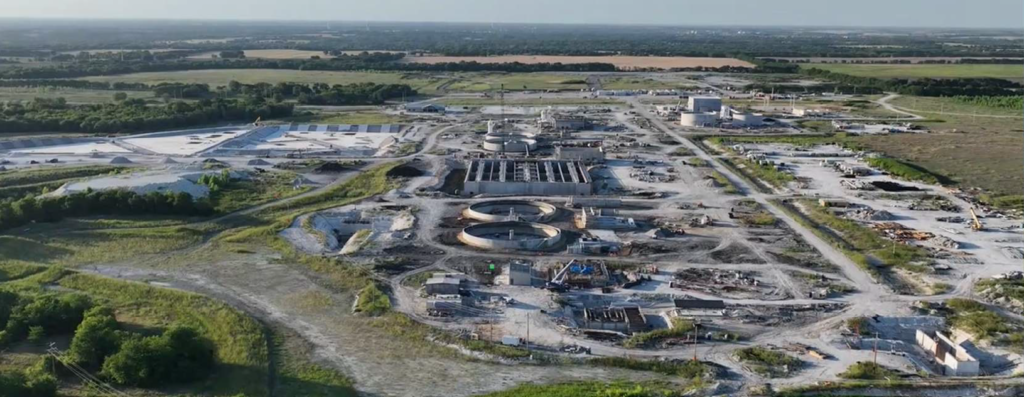
Texas Wastewater Treatment Plants

The Evolution and Modern Challenges of Texas Wastewater Treatment Plants
Introduction
Texas, the Lone Star State, is known for its vast landscapes, bustling cities, and significant contributions to agriculture, energy, and technology. Its rapid growth and economic prosperity have brought about essential infrastructural needs, one of the most critical being the treatment of wastewater. Wastewater treatment plants (WWTPs) in Texas play a pivotal role in maintaining public health, protecting the environment, and ensuring sustainable water resources. This article delves into the history, technology, regulatory frameworks, challenges, and future prospects of wastewater treatment plants in Texas.
Historical Development of Wastewater Treatment in Texas
Early Beginnings
The need for wastewater treatment in Texas can be traced back to the early 20th century when urbanization began to take off, bringing with it the accompanying problems of waste management. Initially, untreated sewage was often discharged directly into rivers and streams, leading to significant public health issues and environmental degradation.
The First Treatment Plants
The first wastewater treatment plants in Texas emerged in the 1920s, implementing primary treatment processes designed to remove solid waste through sedimentation. However, these early plants were rudimentary and did little to address dissolved and particulate biological pollutants.
Evolution and Improvements
From the 1950s to the 1970s, significant advancements were made in wastewater treatment technology. The development of secondary treatment methods, such as activated sludge processes and trickling filters, enabled plants to remove a higher percentage of organic pollutants. This period also saw the emergence of regulatory frameworks like the Federal Water Pollution Control Act of 1948 and its subsequent amendments, which emphasized water quality and pollution control.
Modern Technology in Texas Wastewater Treatment Plants
Primary Treatment
Modern wastewater treatment plants in Texas employ sophisticated primary treatment methods that involve screening, grit removal, and primary sedimentation. These methods are highly efficient at removing large particles and organic matter from wastewater.
Secondary Treatment
Secondary treatment processes, such as activated sludge and biological nutrient removal (BNR), are now standard in Texas WWTPs. These processes rely on biological activity to break down organic matter and nutrients. Aeration tanks and clarifiers are critical components, ensuring efficient microbial digestion and sedimentation.
Tertiary Treatment
Tertiary treatment methods, which include filtration, lagoons, constructed wetlands, and chemical treatments, further purify the wastewater. Plants often employ advanced methods like membrane bioreactors (MBRs) and reverse osmosis to achieve high levels of water purity, making treated water suitable for various reuse applications, such as irrigation and industrial processes.
Advanced Technologies
The advent of technologies such as ultraviolet (UV) disinfection and ozone treatment has significantly improved the disinfection process, ensuring that the treated wastewater meets stringent safety and quality standards. Texas is also exploring the potential of artificial intelligence (AI) and machine learning to optimize the operational efficiency of WWTPs, enhancing real-time monitoring and predictive maintenance.
Regulatory Framework
State Regulations
In Texas, the Texas Commission on Environmental Quality (TCEQ) is the primary regulatory body overseeing wastewater treatment. TCEQ establishes standards and guidelines for wastewater discharge, ensuring compliance with both state and federal regulations. Key regulations include the Texas Pollutant Discharge Elimination System (TPDES) and the Texas Surface Water Quality Standards.
Federal Regulations
At the federal level, the Clean Water Act (CWA) of 1972 is the cornerstone of water quality regulation. Administered by the Environmental Protection Agency (EPA), the CWA sets the framework for establishing water quality standards, issuing discharge permits, and enforcing compliance.
Local Policies
Municipalities in Texas also play a critical role in wastewater management. Local ordinances and policies often set additional requirements for wastewater treatment plants, addressing community-specific concerns and ensuring alignment with broader environmental goals.
Challenges Facing Texas Wastewater Treatment Plants
Population Growth and Urbanization
One of the most pressing challenges for Texas WWTPs is the state’s rapidly growing population and urbanization. Cities like Houston, Dallas, and Austin are experiencing significant population influx, increasing the volume of wastewater that needs to be treated. This growth places immense pressure on existing infrastructure and necessitates the expansion and upgrade of treatment facilities.
Climate Change and Water Scarcity
Texas is no stranger to the impacts of climate change, experiencing severe droughts and fluctuating weather patterns. These conditions can strain water resources and affect the operation of wastewater treatment plants. During droughts, the reduced flow in receiving water bodies can make pollutant dilution more challenging, necessitating higher treatment standards.
Aging Infrastructure
Many of Texas’s wastewater treatment facilities were built decades ago and are now facing issues related to aging infrastructure. The deterioration of pipes, pumps, and other essential components can lead to inefficiencies, operational challenges, and costly repairs. Upgrading and modernizing these systems is a significant financial and logistical challenge.
Regulatory Compliance
Complying with ever-evolving regulatory standards is a continuous challenge for Texas WWTPs. Meeting stringent effluent limitations, addressing emerging contaminants, and adapting to new guidelines require ongoing investments in technology and personnel training.
Funding and Financial Constraints
Securing adequate funding for wastewater treatment projects is a persistent challenge. While federal and state grants are available, they often fall short of the total financial needs. Municipalities must explore alternative funding mechanisms, such as public-private partnerships (PPPs), bonds, and rate increases, to finance necessary upgrades and expansions.
Technological Advancements
While advanced technologies offer significant benefits, their implementation can be challenging. High upfront costs, the need for specialized skills, and the integration with existing systems are some of the hurdles that utilities must overcome.
Case Studies: Success Stories and Lessons Learned
Austin’s Hornsby Bend Biosolids Management Plant
The Hornsby Bend Biosolids Management Plant in Austin is a notable example of sustainable wastewater treatment. The facility processes biosolids and food waste to produce compost and biogas. The biogas is used to generate electricity, making the plant largely energy self-sufficient. This approach not only addresses waste disposal but also contributes to renewable energy production, demonstrating a successful model of resource recovery.
Houston’s 69th Street Wastewater Treatment Plant
Houston’s 69th Street WWTP is one of the largest treatment facilities in Texas, serving a population of over 2 million. The plant has implemented advanced treatment processes, including UV disinfection and nutrient removal, to meet stringent discharge standards. The facility’s integration of smart technologies for monitoring and control has enhanced operational efficiency and reliability.
San Antonio Water System (SAWS) and Water Recycling
San Antonio Water System (SAWS) is a pioneer in water recycling, implementing one of the largest direct potable reuse (DPR) programs in the United States. The program treats wastewater to drinking water standards, providing a sustainable water source for the city. This innovative approach has garnered national recognition and serves as a model for other regions facing water scarcity.
Future Prospects and Innovations
Enhanced Resource Recovery
The future of wastewater treatment in Texas lies in enhanced resource recovery. Modern WWTPs are increasingly viewed as resource recovery facilities, capable of extracting energy, nutrients, and water from wastewater. Technologies such as anaerobic digestion, phosphorus recovery, and advanced oxidation processes hold promise for maximizing resource recovery.
Digital Transformation
The digital transformation of wastewater treatment is an emerging trend. The implementation of AI, machine learning, and the Internet of Things (IoT) is enhancing data collection, analysis, and decision-making. Predictive analytics can optimize maintenance schedules, reduce energy consumption, and improve overall plant performance.
Decentralized Treatment Systems
Decentralized wastewater treatment systems are gaining traction, particularly in rural and peri-urban areas. These systems offer flexibility, scalability, and cost-effectiveness. Onsite treatment solutions, such as membrane bioreactors and package plants, provide viable alternatives to centralized systems, reducing the need for extensive sewer networks.
Addressing Emerging Contaminants
Emerging contaminants, such as pharmaceuticals, microplastics, and personal care products, pose a new challenge for wastewater treatment. Research and development efforts are focused on identifying and mitigating these contaminants. Advanced oxidation processes, nanofiltration, and bioaugmentation are potential solutions under investigation.
Climate Resilience
Building resilience to climate change is a priority for Texas WWTPs. Strategies such as green infrastructure, flood risk management, and drought preparedness are essential to ensure the continued operation of treatment facilities under changing climatic conditions. Integrating climate resilience into planning and design will be critical for future sustainability.
Conclusion
Wastewater treatment plants in Texas have come a long way since their early beginnings, evolving into sophisticated facilities that play a crucial role in public health and environmental protection. The state’s rapid growth, combined with emerging challenges such as climate change and regulatory compliance, underscores the need for continued investment and innovation in wastewater management. By embracing advanced technologies, resource recovery, and sustainable practices, Texas WWTPs can continue to meet the demands of a growing population while safeguarding water resources for future generations. The journey of wastewater treatment in Texas is one of progress, resilience, and a commitment to a cleaner, healthier environment.
